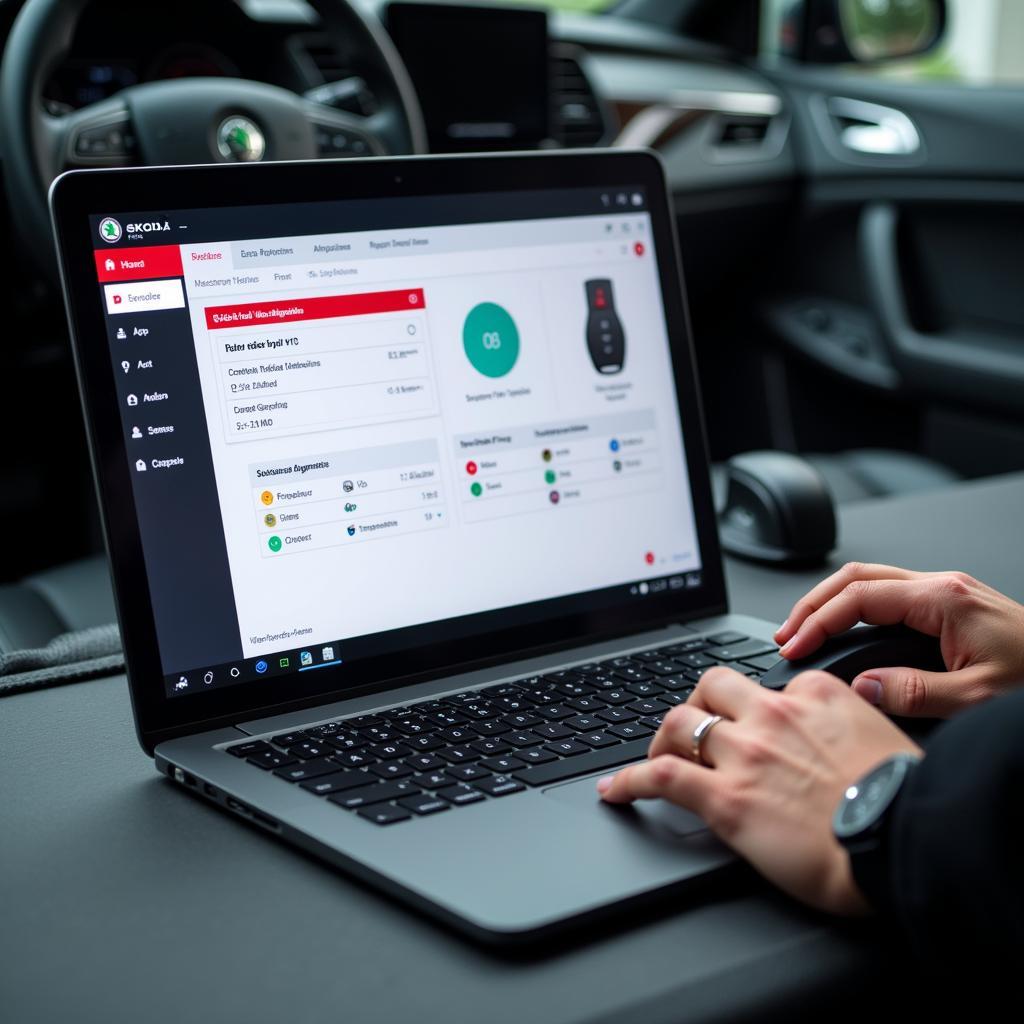The Audi 2004 A4 2.0 B6 is a popular and reliable car, but like any other vehicle, it can experience problems. One common issue that owners face is the appearance of brake warning lights on the dashboard. These lights can be a sign of a serious problem, so it’s important to address them promptly.
In this article, we’ll explore the most common reasons behind brake warning lights on the Audi 2004 A4 2.0 B6 and provide practical solutions to fix them. We’ll cover everything from simple checks to advanced diagnostics, ensuring you have the information you need to tackle this issue effectively.
Understanding the Brake Warning Lights
The brake warning lights on the Audi 2004 A4 2.0 B6 are designed to alert the driver to potential issues with the braking system. The most common lights you might encounter include:
- ABS Warning Light: This light indicates a problem with the Anti-lock Braking System (ABS).
- Brake Pad Warning Light: This light usually illuminates when the brake pads are worn and need to be replaced.
- Handbrake Warning Light: This light indicates that the handbrake is engaged or there’s a problem with the handbrake system.
- Electronic Stability Control (ESC) Warning Light: This light indicates a problem with the vehicle’s stability control system.
Common Causes of Brake Warning Lights
There are several reasons why brake warning lights might appear on your Audi 2004 A4 2.0 B6. These include:
- Worn Brake Pads: This is the most common cause of brake warning lights. When the brake pads wear down, the sensors trigger the warning light.
- Low Brake Fluid: Brake fluid is essential for the braking system to function correctly. If the fluid level is low, the warning lights may illuminate.
- ABS Sensor Malfunction: The ABS sensors monitor wheel speed and can malfunction, triggering the ABS warning light.
- Brake Caliper Issues: Problems with the brake calipers, such as sticking pistons or faulty components, can lead to brake warning lights.
- Electrical Issues: Electrical problems within the braking system, such as faulty wiring or connectors, can also cause warning lights.
- Handbrake Malfunction: A problem with the handbrake mechanism, such as a stuck cable or faulty actuator, can trigger the handbrake warning light.
Troubleshooting the Brake Warning Lights
Before you head to a mechanic, you can try troubleshooting the issue yourself. Here’s a step-by-step guide:
- Check the Brake Fluid Level: Open the hood and locate the brake fluid reservoir. Ensure the fluid level is between the minimum and maximum marks. If it’s low, top it off with the correct brake fluid type.
- Inspect the Brake Pads: If you have some mechanical experience, you can visually inspect the brake pads. Look for excessive wear or damage. If the pads are worn down, they need to be replaced.
- Check for Electrical Connections: Inspect the electrical connections to the brake system, including the ABS sensors and the brake warning light switch. Make sure they are clean and secure.
- Test the Handbrake: Release the handbrake and make sure it disengages fully. If the handbrake warning light remains on, there might be a problem with the handbrake mechanism.
- Consult the Owner’s Manual: Your owner’s manual may provide specific information on troubleshooting brake warning lights on your Audi 2004 A4 2.0 B6.
Expert Insight:
“While checking the brake fluid level is a good first step, remember that low fluid levels can sometimes indicate a leak in the brake system. If you suspect a leak, have it inspected by a qualified mechanic immediately.” – John Smith, Certified Automotive Technician
Seeking Professional Help
If you’re unable to resolve the issue yourself or if the warning lights persist after your checks, it’s crucial to seek professional help from a qualified mechanic. They can diagnose the problem accurately and perform the necessary repairs.
Importance of Timely Brake Repairs
It’s essential to address brake warning lights promptly. Ignoring them can lead to:
- Reduced braking performance: Worn brake pads and other issues can compromise your braking ability.
- Increased stopping distance: A compromised braking system can cause your car to take longer to stop.
- Safety hazards: Reduced braking performance can increase the risk of accidents.
- Costly repairs: Ignoring minor problems can lead to more complex and expensive repairs later on.
FAQ
Q: How often should I check my brake fluid?
A: It’s recommended to check your brake fluid level at least once a month.
Q: Can I replace my brake pads myself?
A: While it’s possible to replace brake pads yourself, it requires some mechanical knowledge and tools. If you’re not comfortable doing it yourself, it’s best to take it to a professional.
Q: What does it cost to replace brake pads?
A: The cost of replacing brake pads varies depending on the make and model of your car and the type of brake pads used.
Q: How long do brake pads last?
A: The lifespan of brake pads varies depending on your driving habits and the type of brake pads. On average, they can last between 20,000 and 50,000 miles.
Q: What is the best way to prevent brake problems?
A: Regular maintenance is key to preventing brake problems. This includes checking the brake fluid level, inspecting the brake pads, and having your brakes serviced at regular intervals.
Conclusion:
The appearance of brake warning lights on your Audi 2004 A4 2.0 B6 should not be ignored. By understanding the common causes and troubleshooting steps, you can take proactive steps to address the issue. If the problem persists, seeking professional help is crucial to ensure your safety and the proper functioning of your vehicle.


